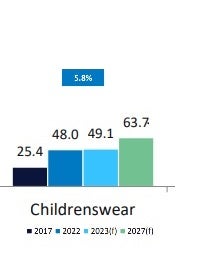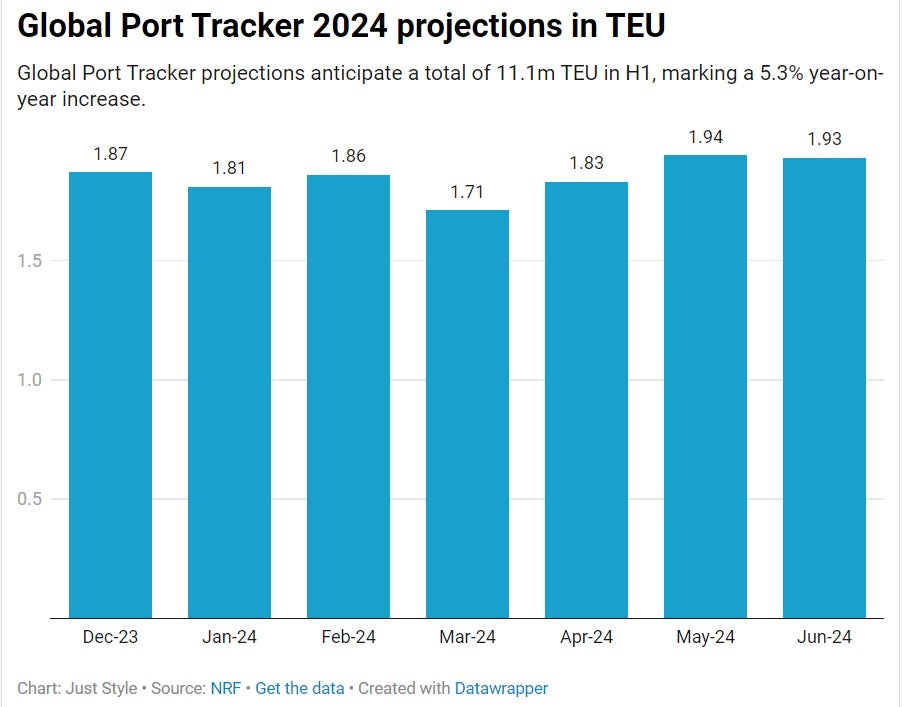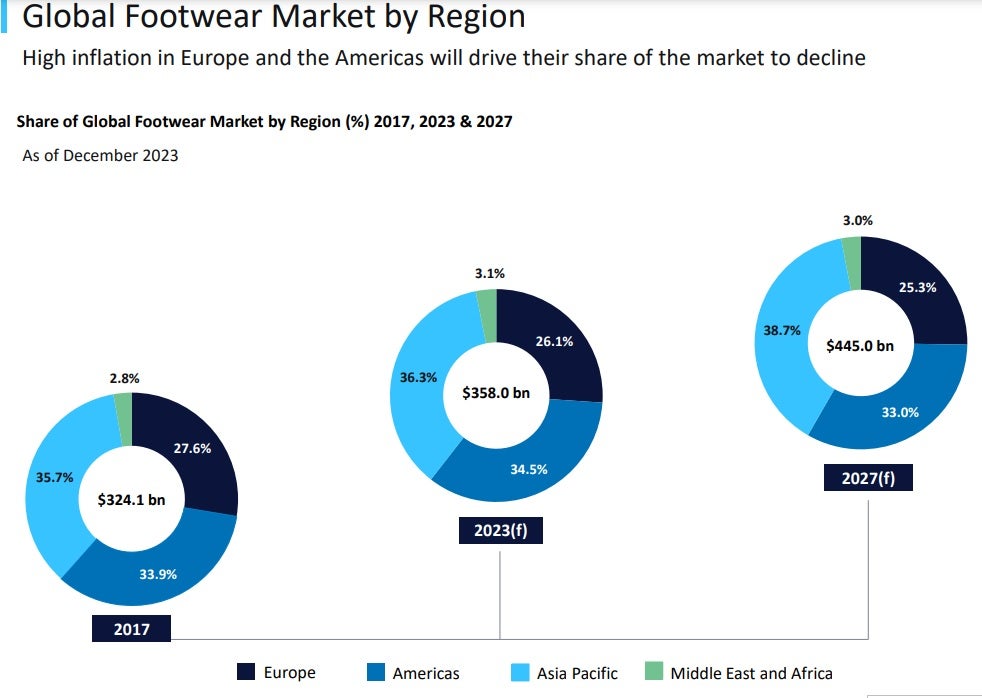
This week’s top apparel-related datasets come from The Children’s Place, the National Retail Federation, the US Office of Textiles and Apparel (Otexa) and Shoe Carnival.
The Children’s Place seeks fresh funding, weighs options as sales sink
It has now appointed advisors including Centerview Partners, along with lenders and potential lenders to secure new financing vital for sustaining ongoing operations.
Additionally, it is exploring “strategic alternatives” in the event that securing new finance proves challenging.
The company highlighted it has been working to improve its liquidity position and strengthen its balance sheet to put it in the best position for the future.
It is now forecasting an operating loss of 8-9% compared with its prior guidance of an operating income of 2-3%.
Childrenswear as a category remains on a healthy growth trajectory and in the last year there have been several investments into the space.
PDS subsidiary Norlanka announced a 26% stake acquisition in kidswear maker Nobleswear in December. A month earlier, value chain Poundland announced it was expanding its clothing range in UK stores and would be focusing on kidswear. While last summer UK fashion retailer Primark announced it would be cutting prices on kids range.
According to GlobalData analysis, the online childrenswear category has a CAGR of 5.8% to 2027.
Specifically, girlswear is forecast to have a market value of $30bn by 2027 up from $22.9bn in 2023.
While boyswear will have a market value of $24.5bn up from $18.7bn in the same period.

US import cargo volumes to surge in 2024 despite Red Sea turmoil
The apparel sector is urging a joined-up approach to tackling Red Sea disruption to trade vessels. Still, the latest retail US import figures suggest it has been mostly business as usual.
The National Retail Federation (NRF)’s vice president for supply chain and customs policy Jonathan Gold pointed out that only 12% of US-bound cargo passes through the Suez Canal, but added “the situation is bringing volatility and uncertainty that are being felt around the globe”.
He stressed the importance of international cooperation to ensure the safety of vessels and crews, underscoring the potential consequences of prolonged disruptions on global supply chains.
Hackett Associates founder Ben Hackett highlighted the shipping industry’s swift adaptation to the challenges, noting the use of surplus capacity built up during the pandemic to redirect voyages around the Cape of Good Hope or towards the US West Coast.
US ports covered by Global Port Tracker handled 1.87m Twenty-Foot Equivalent Units (TEU) in December, marking an 8.3% increase year over year.
While January’s numbers are yet to be reported, projections indicate a marginal year-over-year increase of 0.3% to 1.81m TEU
February is expected to see a substantial rise of 20.4% to 1.86m TEU
According to NRF projections, the first half of 2024 is looking good with an anticipated total of 11.1m TEU, marking a 5.3% increase from the same period last year.

Shoe Carnival snaps up Rogan’s Shoes for $45m
The deal is expected to generate approximately $84m in sales and $10m in operating income for the group.
The acquisition brings the Shoe Carnival’s total number of stores to 429, bringing it closer to its goal of expanding to more than 500 stores by 2028.
Footwear has steadily grown since 2019, and rose by 3.3% in 2023 year-on-year, helped by higher prices amid soaring inflation. It has also benefited from the growth of trainers as consumers remain concerned about their health and wellbeing.
But while footwear appears a promising category to tap into, GlobalData projections reveal it is slightly more risky for US players.
The total market is now anticipated to grow at a CAGR of 5.6% between 2023 and 2027, and this will be driven by Asia Pacific, which will see its share of the total market rise by 2.4ppts to 38.7%, as its increasing urbanisation and young population leads to greater spending.
The US, however, is expected to be the poorest performing region within this forecast period, with its share falling by 1.4ppts to 33.0%, as high inflation causes consumers to cut back on non-essential purchases, and because its more established nature gives it less scope to grow.
Earlier this week (13 February), LVMH-backed private equity firm L Catterton announced it was buying a third (36%) of Italian luxury business Tod’s shares as the company plans to delist.
The Americas witnessed the softest footwear market growth of just 0.3% in 2023, as economic pressures continued to squeeze consumers’ incomes. The region is also forecast to have the slowest performance between 2022 and 2027, with a CAGR
of 3.6%. Latin America will be slightly stronger than North America, with CAGRs of 4.4% and 3.5% respectively, with the former supported by countries like Peru, Argentina, and Brazil, which are experiencing stronger economic growth.

Data suggests 2023 is turning point in US apparel nearsourcing
US apparel imports in December enjoyed a 4.5% uplift on the previous month after several months of straight decline but were down on a year-on-year basis after seven of the 10 top supplier countries reported lower shipments.
The Central American apparel suppliers to the US were the only ones of the top 10 to see market share growth when comparing December 2023 with December 2022.
Honduras, Nicaragua and Mexico all increased their share of the US apparel supplier market by 0.3% followed by El Salvador whose share grew 0.1%.
Bangladesh’s market share fell the most by 0.8%, however, China’s market share went up the most (1.4%) despite the ongoing US push for diversification away from the country.
The South East Asian Nation (ASEAN) countries did see a 1% decline in market share overall, but that has not necessarily benefited nearshoring from the Western Hemisphere, according to Dr Sheng Lu, associate professor of fashion and apparel studies, at the University of Delaware.
Credit: GlobalData



